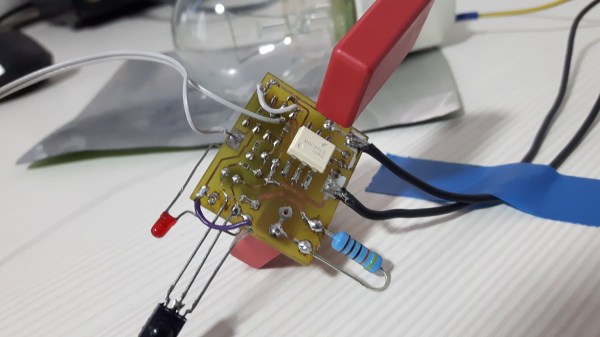There was an urban legend back in the days of mechanical electricity meters, that there were “lucky” appliances that once plugged in would make the meter go backwards. It probably has its origin in the interaction between a strongly capacitive load and the inductance of the coils in the meter but remains largely apocryphal for the average home user. That’s not to say that a meter can’t be fooled into doing strange things though, as a team at the University of Twente have demonstrated by sending some more modern meters running backwards. How have they performed this miracle? Electromagnetic interference from a dimmer switch.
Reading the paper (PDF link) it becomes apparent that this behavior is the result of the dimmer switch having the ability to move the phase of the current pulse with respect to the voltage cycle. AC dimmers are old hat in 2021, but for those unfamiliar with their operation they work by switching themselves on only for a portion of the mains cycle. The cycle time is varied by the dimming control. Thus the time between the mains zero-crossing point and their turn-on point is equivalent to a phase shift of the current waveform. Since electricity meters depend heavily upon this phase relationship, their performance can be tuned. Perhaps European stores will now brace themselves for a run on dimmer switches.
If you’re curious about these old-style dimmers, take a look at some of their basic functionality.
Thanks [Dorus] for the tip.








 Halogen bulbs put out a lot of focused light but they do it at the expense of burning up a lot of Watts and generating a lot of heat. The cost for an LED replacement like the one seen disassembled above has come down quite a bit. This drove [Jonathan Foote] to purchase several units and he just couldn’t resist tearing them apart to try out a couple of hacks.
Halogen bulbs put out a lot of focused light but they do it at the expense of burning up a lot of Watts and generating a lot of heat. The cost for an LED replacement like the one seen disassembled above has come down quite a bit. This drove [Jonathan Foote] to purchase several units and he just couldn’t resist tearing them apart to try out a couple of hacks.









